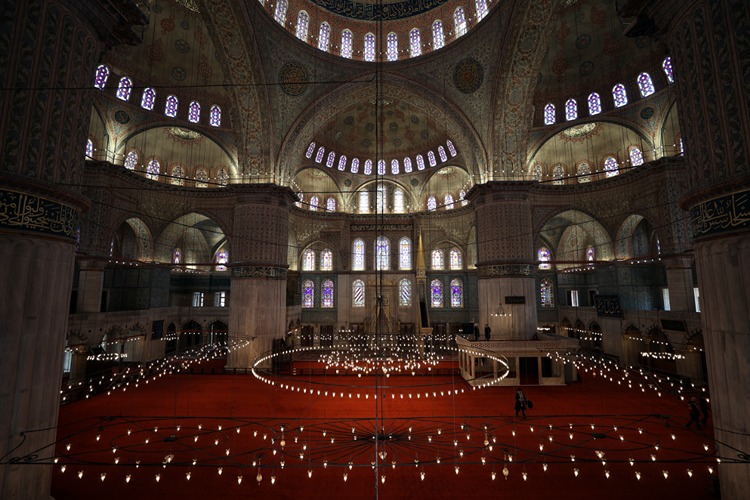
The pearl of the historical peninsula, "Sultanahmet Mosque" has maintained its magnificence for centuries
12.06.2025
In Istanbul, where history, aesthetics and spirituality are intertwined, the Sultanahmet Mosque, rising with all its grandeur, welcomes its visitors as a symbol of Ottoman elegance that has reached the present day from centuries ago.
The Sultanahmet Mosque, which is the first mosque of Ottoman architecture with 6 minarets and rises with all its magnificence opposite Hagia Sophia on the historical peninsula, was opened for worship 408 years ago.
The temple, built by Sultan Ahmet I, who ascended to the throne at a young age, with his deep devotion to Allah, draws attention not only with its architecture, but also with the symbols it carries and the construction process.
The construction of the mosque, which started in 1609, was completed in approximately 7 years and 5 months under the supervision of Sedefkar Mehmet Ağa, one of the most skillful architects of the period. The opening of the mosque, one of the most elegant works of Turkish-Islamic civilization, was held on June 9, 1617.
In addition to being a place of worship, the mosque, which was also one of the largest social complexes of its time, contained madrasahs, a sultan's mansion, arasta, shops, a bathhouse, fountain, fountains, a tomb, a hospital, a primary school, a soup kitchen and rental rooms. Some of these structures have not survived to the present day.
More than 21 thousand tiles were used in the mosque
The structure, which is the pinnacle of the 200-year synthesis of Ottoman mosque and Byzantine church architecture, is defined as the last great mosque of the classical period.
The 6 minarets of the Sultanahmet Mosque are also seen as an innovation according to the architectural understanding of the period. Four of these minarets have three balconies, and two have two balconies.
The main area of the mosque attracts attention with its dome, which is 43 meters high and 23.5 meters in diameter. The main dome, which sits on four elephant feet, is one of the peaks reached in classical Ottoman mosque architecture. The space was balanced with the semi-domes and arches surrounding the dome, while the interior was refreshed.
The interior decorations of the mosque stand out as one of the brightest examples of the Ottoman artistic understanding. 21,043 tiles produced in the workshops of İznik and Kütahya were embroidered on the interior surfaces of the mosque like embroidery, and the mosque is called the "Blue Mosque" due to these tiles.
While the tiles feature classical Ottoman motifs, the tile workmanship and gilded details, especially around the mihrab, also reveal the aesthetic taste of the period.
Thanks to the nearly 260 windows illuminating the interior, the light refracts on the tiles, creating a dazzling riot of color. The inscriptions of the mosque, which is famous for its tiles, bear the signature of Seyyid Kasım Gübari from Diyarbakır, one of the calligraphers of the period.
